The Constitution
The article of confederation had problems that limited the functioning of the new government. The major weakness was the amount of power it gave the individual states leaving the federal government to be weak. A weak central government meant that the states could not effectively operate as a union. The article gave states the power to make their own currency and come up with their own foreign policies. The federal government could not be allowed to put regulatory measures on commerce.
It was also not allowed to collect taxes, but it could seek aid from a state. The article also restricted congress in many ways. It did not allow Congress to raise taxes or to create a court system that can be used to ensure trade among the states. Evidence of government weakness resulting from the limitations of the article was seen during Shay’s rebellion. Farmers from New England wanted to be paid for their role in the war, but the government had no means to pay them. They, therefore, revolted against the federal government attacking the federal armory in Massachusetts. The rebellion was, therefore, an indication of the government’s inability to raise money.
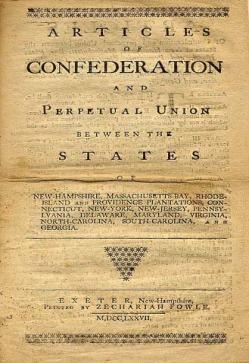
The need for a strong central government became inevitable. Several issues were debated at the constitutional convention. The issue discussed led to the adoption of a new constitution. The main argument was obviously the need to strengthen the central government. In addition, the Virginia delegate proposed the creation of a national government that exercises authority over all the states in the confederation. According to the proposal, the national government was to have two strong arms, including the executive and the judiciary. Legislative representation into the congress was based on the size of individual states.
The idea of a strong federal government was not liked by everyone, especially delegates from small states. They felt that they would not benefit from the deal because of their size. According to the proposal made by the Virginia delegate, the size of a state determined the number of votes it would have in congress. They refused to vote for the proposed constitution, and this created a deadlock. It took the compromise of both sides for the constitution to pass.
The Early Republic
The main challenge faced by the first few presidents was that of keeping the nation united. During the early years after independence, many countries, including England, had planned against the US. George Washington knew that the country would only manage to stand if all the 13 states remain united. He was faced with domestic and international challenges. Domestically he had to put up with rebellion against federal authority.
In 1794, farmers in Pennsylvania refused to pay taxes against federal laws. Just like Washington, Madison faced the challenge of a divided cabinet. Jefferson’s main challenge during his reign was the navigation between France and Britain. The two countries were always in conflict and competing for trade with the US. The challenge for the president was, therefore, the need to maintain a neutral approach towards the issue.
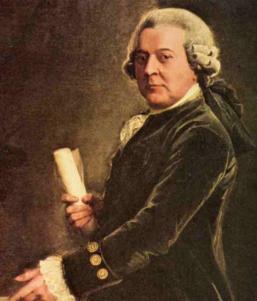
Thomas Jefferson was the third president of the US. He experienced challenges resulting from the foreign relations between the US and England.
The purchase of Louisiana was also a challenge faced by John Adam. During his time, France and England had problems forming an alliance with the US. Just like Jefferson, he also experienced the challenge of maintaining a neutral position.
The early republic era was between 1789 and 1823. American politics in this era began with the inauguration of George Washington as the first president. He was the general that led the troop to victory in the war of independence. In 1791 the bill of rights was approved by congress. Slavery was a contentious issue that shaped American politics during this era. Based on the bill of rights, some section of the political sphere was against it while others still approved slavery.
The Market Economy
The economy of the country experienced growth from early 1800 to mid-1800. There was the emergence of new transportation systems, factories, commercial farms, and growing cities. The first factory-built was that of spinning cotton. There was immense technological development in the cotton industry with the building of machines that helped gin and spin cotton. The industry grew and became highly profitable. It also caused an increase in the slave trade despite the plans to abolish it. Later the industry experienced a boom with the introduction of the sewing machine and other technological development for mass production of cotton. With the industrial revolution taking effect in the country, other industries also grew.
The industrial revolution was boosted by innovations in the textile industry. Technological concepts used in the industry were applied in other areas.
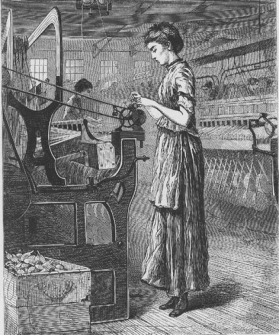
The image above shows the machines that were used in the factories. The machines made work easier for workers.
The transport industry also experienced a revolution because of the need to transport raw materials to industries and finished products from the markets. Each state and region specialized in various products. The west was known as the breadbasket, the south was mainly agricultural, while the east had all the major processing industries. Therefore, the transport system helped to create a domestic or a national market economy. Roads, railways, and shipping routes were developed to connect all the economic regions in the country.
The economic changes and development came with a lot of opportunities and challenges. The rapid urbanization created challenges. There was increased social inequality in the cities. The gap between the rich and the poor increased. Immigration was also a major problem that came with urbanization. On a positive note, the economic development created an increase in foreign commerce.
Politics in the Age of Jackson
The course of democracy in America was expanded greatly in the age of Jackson. The transformation meant that the common citizens had more power than the wealthy. In 1924, President Adam was elected into office out of controversy. This created the need to have a democratic environment to address such controversies in the future. Policies for democracy were adopted to allow room for transparency in elections and government operation. It was during this time that universal white male suffrage was adopted. This meant that all white males were allowed to vote, unlike in the past, when only the wealthy could vote. The government was no longer in the hands of those who owned land.
The essence of Andrew Jackson’s policy could be noted from his policies concerning the bank war, Indian removal, the spoil system, and the nullification. Concerning the bank war, he particularly opposed monopolies that the government gave to the banks. He was very much against the banking system because he believed that this system was not beneficial to the common man. He offered solutions that seem not to ever work. His suggestion was that the country should use silver and gold to transact business instead of other forms of money.
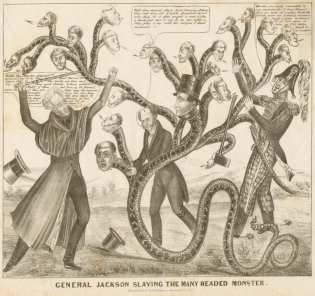
The politics in the age of Jackson can be related to the political events of the modern society. Currently, the world is moving towards a democratic society. Most communist and tyrannical states are taking a shift towards democracy. These societies are gradually embracing democracy and allowing the will of majority to prevail. The recent unrest in the Middle East is a perfect example of the changes towards democracy.
Religion and Reform
Men and women from all walks of life used religion and morality to create a solution to some of the societal problems they faced. There was widespread segregation on some sections of the society including women and black Americans. The idea of morality was used to form laws which protected women and blacks from the segregation. Slavery was abolished during this period and women suffrage was also realized.
Many people joined religious reform movements because of the need to revive their faith. The Spiritual Awakening across the country highlighted on the need to become responsible citizens and to follow Christ. The Second Awakening is one such movement that was formed during the early 19th century. Another reform movement was that of women’s right that fought to increase women participation in the society.
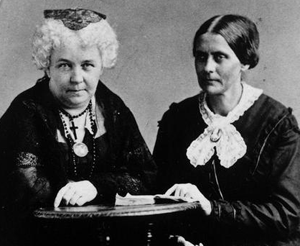
The lives of many people were changed as a result of the unity and revival of faith. Most of the achievements of that time are still being felt today.